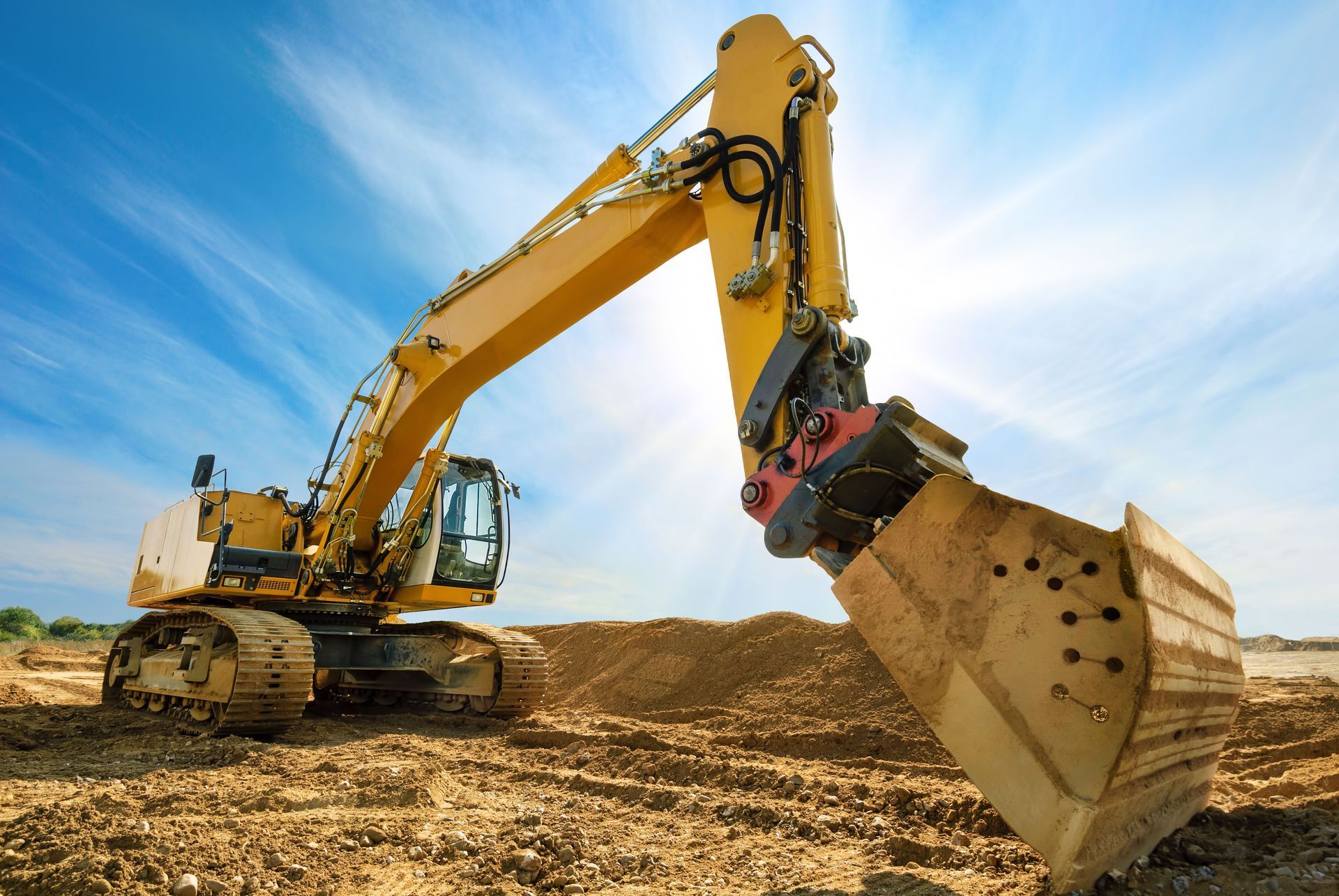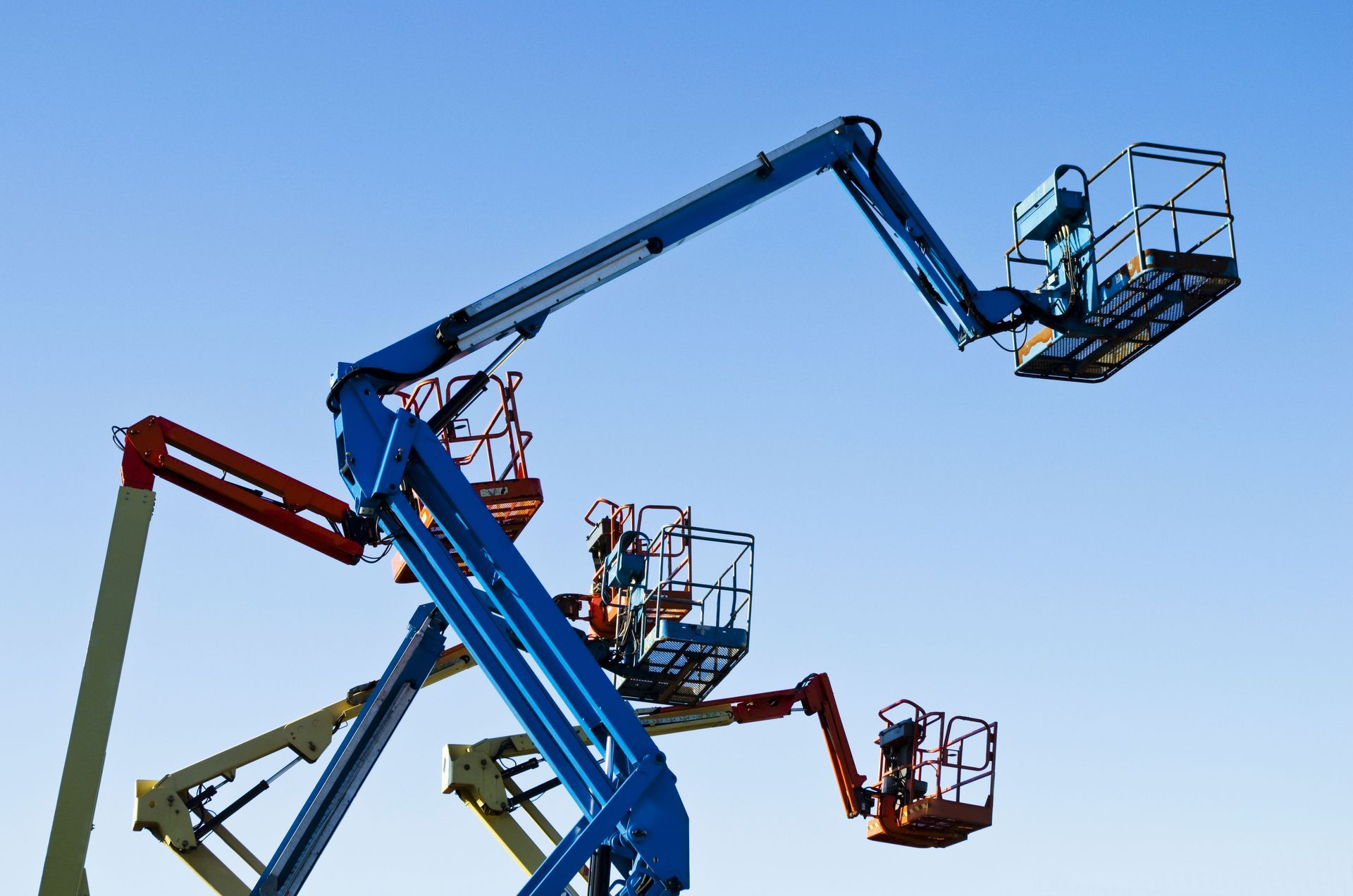August 11, 2025
This article explores the key trends that are transforming the heavy equipment rental industry, offering insights into the factors driving growth and innovation in this dynamic sector. By understanding these trends, stakeholders can better position themselves for success in an evolving market. The heavy equipment rental industry plays a crucial role in supplying construction, mining, and industrial sectors with essential machinery without the large upfront costs associated with ownership. Given technological advances, sustainability concerns, and fluctuating economic conditions, the industry is experiencing significant changes. By examining these trends, industry stakeholders can adapt and thrive in this competitive landscape. For anyone in the heavy equipment rental business, staying informed on these developments is vital for long-term success.
1. Embracing Technological Advancements
A. Leveraging Telematics for Equipment Management
Telematics systems have revolutionized the way fleet managers oversee and maintain equipment. By integrating GPS technology and on-board diagnostics, these systems provide real-time data on equipment location, usage, and health. This information allows companies to optimize equipment utilization, reducing downtime and improving efficiency. Over the past few years, the adoption of telematics in equipment management has accelerated, offering businesses a competitive advantage through enhanced operational insights. As a result, the heavy equipment rental sector is increasingly relying on telematics to streamline operations and deliver greater value to clients.
B. Integrating IoT to Enhance Fleet Operations
The Internet of Things (IoT) is transforming fleet operations by connecting machinery and enabling seamless communication between devices. With IoT technology, rental companies can monitor equipment performance, predict maintenance needs, and automate routine tasks. This connectivity improves operational efficiency and ensures equipment availability, bolstering customer satisfaction. IoT integration also provides actionable insights that assist managers in making informed decisions about resource allocation and fleet optimization. The heavy equipment rental industry is leveraging IoT to enhance service offerings and maintain a competitive edge in a fast-paced market. Companies in the heavy equipment rental business are investing in these tools to increase both profitability and customer satisfaction.
2. Adopting Sustainability and Green Equipment
A. Meeting Demand for Eco-Friendly Equipment
There is a growing demand for eco-friendly equipment in response to environmental concerns and sustainability goals. Businesses are increasingly seeking rental options that offer low emissions, reduced fuel consumption, and minimal ecological impact. The trend towards green solutions is driven by both regulatory pressures and consumer preferences for environmentally responsible practices. As a result, rental companies are expanding their inventory to include more sustainable machinery, such as low-emission excavators and biofuel-powered loaders. This shift towards eco-friendly equipment reflects a broader industry commitment to sustainability and environmental stewardship. Those operating within the heavy equipment rental business must align with these expectations to remain competitive.
B. Transitioning to Electric and Hybrid Machinery
Electric and hybrid machinery are becoming more prevalent in the heavy equipment rental industry as companies strive to meet sustainability targets. These machines offer numerous benefits, including reduced emissions, lower operating costs, and improved energy efficiency. The shift towards electric and hybrid models is also driven by advancements in battery technology, which have increased the performance and range of such equipment. Rental companies are increasingly investing in these greener alternatives to cater to a growing customer base prioritizing sustainability. As the market for electric and hybrid machinery expands, so too will their presence in rental fleets.
3. Evolving Rental Models
A. Offering Flexible Short-Term and Long-Term Rentals
Flexibility is a key factor in driving the evolution of rent models within the heavy equipment industry. Businesses are increasingly seeking rental agreements that can adapt to shifting project requirements, balancing cost-effectiveness and operational needs. Short-term rentals provide the agility needed to respond to immediate project demands without significant financial commitments. Conversely, long-term rental agreements offer stability and the assurance of equipment availability over extensive periods. Rental companies are innovating their offerings to accommodate these diverse needs, ensuring their services remain relevant in a rapidly changing industry landscape.
B. Providing Subscription-Based and Membership Services
The introduction of subscription-based and membership rental services reflects the increasing demand for convenience and tailored solutions. These models provide clients with predictable costs, flexible access to equipment, and the ability to update or exchange machinery as needed. Subscription services, in particular, allow companies to align their equipment usage with their current operational scale without incurring heavy financial burdens. Such models are also attractive to businesses seeking certainty in budgeting and resource allocation. As the industry evolves, it is expected that more rental companies will adopt subscription-based offerings to stay competitive. These evolving models are reshaping how the heavy equipment rental business operates and engages with customers.
4. Expanding Into Global Markets
A. Targeting Growth in Emerging Markets
Emerging markets present significant growth opportunities for the heavy equipment rental industry, driven by rapid industrialization and infrastructure development. These regions are experiencing increased demand for construction and industrial machinery, offering rental companies a chance to expand their global footprint. Companies entering these markets can capitalize on local growth drivers, such as government-backed infrastructure projects and urbanization trends. However, navigating these opportunities requires understanding local cultural, economic, and regulatory nuances to succeed. As globalization shapes industry dynamics, emerging markets will remain a critical focus for forward-thinking rental companies.
B. Managing Cross-Border Rental Operations
Cross-border rental operations are becoming more prevalent as companies seek to expand their reach and optimize asset utilization across regions. While this strategy holds considerable potential, it also presents challenges such as regulatory compliance, supply chain complexity, and diverse customer expectations. Successful cross-border operations require the establishment of reliable logistics networks and familiarity with local regulations governing equipment use and rental agreements. Additionally, companies must develop robust strategies to address currency fluctuations and geopolitical factors impacting international trade. Overcoming these challenges is crucial to capitalizing on the growth potential offered by cross-border operations.
5. Responding to Economic Drivers
A. Tracking Trends in the Construction Industry
The construction industry is a primary driver of demand for heavy equipment rentals, with trends in this sector directly impacting the rental market. Fluctuations in construction activity levels, such as significant infrastructure projects or housing booms, create spikes in machinery demand. Rental companies must closely monitor construction trends to effectively manage inventory levels and anticipate client needs. According to Reuters, U.S. businesses increased borrowing for equipment investments by 13% year over year in July 2024, highlighting the economic vitality of construction and related industries. As construction trends continue to evolve, rental companies will need to be agile in positioning themselves to capture emerging opportunities.
B. Supporting Infrastructure Development Initiatives
Infrastructure development initiatives, spearheaded by government policies and investments, significantly influence equipment rental demand. Large-scale projects, such as transportation networks, energy infrastructure, and public facilities, require substantial equipment resources, boosting rental activity. Governments worldwide are investing in infrastructure to stimulate economic growth, modernize cities, and enhance connectivity. Rental companies stand to benefit from these initiatives by providing the machinery needed to complete such projects efficiently. As infrastructure development continues to be a focal point for economic policy, the rental industry will experience sustained demand growth driven by these government-backed efforts.
6. Strengthening Safety and Risk Management
A. Implementing Safety Standards and Protocols
Safety is a paramount concern in the heavy equipment rental industry, with rigorous standards and protocols in place to protect workers and reduce liability. Rental companies adhere to strict safety guidelines, conduct regular equipment inspections, and implement comprehensive training programs for operators. Emphasizing safety not only mitigates risks but also enhances company reputation and client trust.
B. Addressing Insurance and Liability Concerns
Insurance and liability are critical considerations for both rental companies and their clients in managing potential risks and protecting assets. Comprehensive insurance coverage is necessary to address potential damages, theft, or accidents involving rented equipment. Companies must clearly outline liability responsibilities in rental agreements to mitigate legal disputes and ensure transparency with clients.
As the heavy equipment rental industry evolves, embracing innovation, sustainability, and flexibility is key to staying ahead. By understanding and responding to the latest trends—from telematics and IoT integration to green equipment and new rental models—stakeholders can better navigate the shifting landscape and seize emerging opportunities. Global expansion, economic influences, and safety protocols further shape the future of this dynamic sector. To stay competitive and informed in the heavy equipment rental business, businesses must be proactive and adaptable. Contact Region Rents Sales & Service today to explore modern rental solutions that meet your equipment needs in a fast-changing industry.







